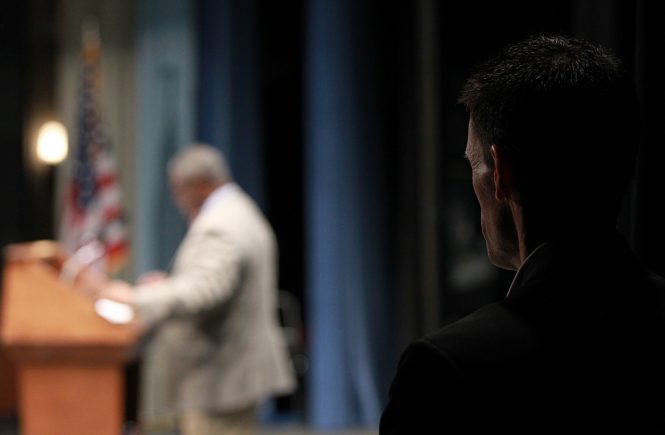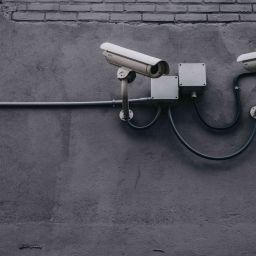7 Bodyguard Secrets that can save your life

1. Practice situational awareness at all times
It doesn’t matter how much training you have or how big and strong you are, if you are not aware of what is going on around you, you will be at risk. You must always be aware of your surroundings and, along with a bit of forward planning and common sense is key. Familiarity with your surroundings is a vital first step, so train yourself to be observant and to take note of what you see around you. Learn to differentiate between what may or may not be significant.
Table of content:
1. Practice situational awareness at all times
2. Adaptability
3. Develop self-reliance
4. Don’t be a hero
5. Keep Moving
6. Perception makes a difference
7. Notice the normal (baseline)
If something is out of place you need to be aware.
Is there an unusual car parked in the street?
Is someone wearing an overcoat on a hot day?
It could be nothing, but by maintaining awareness you can identify these potential threats and make the decision about whether it is something that needs to be addressed.
You need to work on developing a personal alarm bell that rings in your head before a situation turns bad and you become another news story.
Observational skills are crucial, particularly to identify a potential risk of a terrorist attack. There is always a period of time before an assault where a terrorist cell will carry out surveillance in an area. If you are going to fall foul of a violent crime it is likely that you have already been targeted and are being watched.
This surveillance can be detected if you teach yourself how to look and then take action to prevent their attack.
By developing situational awareness will allow you to act before an event, if the event takes place it is nearly always because we have missed the clues, an attack never comes from out of the blue.
Pre incident indicators and how to recognise them
What are pre-incident indicators?
These are the patterns of behaviour that people exhibit in any given situation and they are predictable so learning them could help you to avoid a potentially bad situation. Here are 3 key pre-incident indicators:
Staring
Once someone has targeted you it is likely that they will watch you and often stare at you for inappropriate amounts of time. This is predatory behaviour: When a predator sees prey it will stay focused. A criminal acts the same way, so if this happens to you, then you can assume you are the target. Two key points to remember for this indicator:
- Look out for eye contact
- Use your peripheral vision
Pacing
Be aware if anyone matches your pace, this is not normal human behaviour. It can happen on the street but also in cars. In normal circumstances it is rare to see two cars side-by-side for long before one slows down or speeds up. By varying your own speed, either when walking or in a car, you can see if the other person is matching. This is an indicator that you need to get out of the situation as quickly as possible. A couple of key tips are:
- Change your speed and see if he keeps pace with you.
- If you are walking don’t let him surprise you, just turn around and ask for the time “Sorry, do you know what time it is?” The attacker will be caught off guard and will instantly blush especially if he is an amateur. Knowing that you noticed his intention, it is a high chance that he will turn back and walk away.
Distraction
Many criminals work together; one person will be distracting the victim while the other steps in to steal your phone, purse, wallet or whatever. It takes someone a minimum of 1.5 seconds to react to a situation. Criminals always act to make sure you are unaware that you’re being targeted.
Know Your Colours: How white, yellow, orange and red are key to personal safety.
The colour code system was developed by Colonel Jeff Coopers and breaks down a person’s level of awareness and readiness into 4 easy-to-remember colours. It is a simple system and surprisingly effective.
Condition White
White means you are unprepared and unaware. You are vulnerable and may be open to attack, you have no consciousness of your surroundings and would be unprepared for unexpected events.
What it looks like: Head down, not engaged with what is going on around you, eyes are averted. You could be daydreaming or looking at your phone.
This is the most vulnerable colour in the system and you must never allow yourself to be out in public in condition white
Condition Yellow
There’s no indication of an impending threat or attack, you are relaxed but alert and able to take in your surroundings and what is going on around you. If you are in condition yellow, you are unlikely to be surprised.
What it looks like: Head up, relaxed but taking in your surroundings. You can engage with other people but are still alert enough to recognise potential threats like cars coming towards you or someone coming in for an attack.
Condition Orange
You will enter this state if you see something that gives cause for concern. Things like someone paying too much attention to you or any of the other the things mentioned above in the pre-incident indicators. You may feel threatened so are likely to take steps to be prepared like accessing a cell phone to call for help.
Condition Red
This is when that predetermined threat is happening or likely to happen imminently and your flight or fight response is activated. You have not been taken completely by surprise and are ready to take action if necessary.
The best way forward is to avoid red and stay in yellow. If you can train yourself to do this, it could save your life.
Understanding the Physical and Psychological responses to fear
If you are under attack, the body response to fear is fight or flight. Both are caused by your body releasing large amounts of adrenaline. At this stage you will either fight, in which case you need to be fast and you need to be extremely violent, or you will flee – literally – running for your life. The actions of adrenaline are dramatic so it is useful to expect these, otherwise it can be really worrying. It can also help to avoid a situation where you are paralysed by fear and unable to respond at all.
The main key reactions of the body to adrenaline are:
Tachypsychia
If you have ever heard someone say, ‘it felt like everything was moving in slow motion’ – this is tachypsychia. It is a change in our perception of time and it comes as a result of the brain increasing its processing speed so it can remove you from danger. It might feel odd but it is a good thing, giving you more chance to respond defensively.
If you had the chance to train with a good firearm instructor, I am sure he told you to check your sides after the shots. This is because of our reaction to auditory exclusion and tunnel visioning.
Auditory exclusion
This is where the brain simply blocks any auditory input. Although this is a positive in terms of enabling you to focus on a threat, it can also have the effect that you do not hear the things you need to, such as help arriving, or another assailant behind you. Being aware of the effect helps you to mitigate it by consciously checking the area for more potential threats.
Tunnel vision
Your field of vision narrows so you can focus on the threat. However, this means the loss of your peripheral vision leaving you vulnerable to other dangers. Train yourself so that you will consciously move your eyes and looking around you as this will reduce the negative potential of tunnel vision.
Cognitive dissonance
Also known as dissociation, it is the feeling that you are watching an event from outside yourself, almost like a film. This is a psychological protective response to help you cope with the events as they unfold. However, it can affect your ability to fight back so be aware that it may happen. This will mean you can avoid freezing.
Fear is a good thing, it is our natural response to threats and is part of our survival mechanism. If you are put in an unnatural or dangerous situation it is normal and helpful to feel fear as is nothing to be ashamed of. Remember, your assailant is also feeling the same things.
Bravery means doings something when you are afraid, by understanding that we are all at potential risk and preparing for it we are more likely to be ready if the time ever comes.
2. Adaptability
All of the training is great but you need to make sure you are able to put what you learn into practice when the time comes. Being strong and powerful is obviously a good thing but if you cannot adapt well to new potentially threatening events it will not serve you well. If helps to play the, ‘what If?’ game to run through different scenarios and potential responses to them.
Use the 6 P principle: Proper Prior Planning Prevents Poor Performance.
During times of stress we find it difficult to think; advance planning means doing the thinking in advance. When the time comes, you just need to act on your plan.
You will become more vulnerable if you feel comfortable and safe. Familiar surroundings and being close to home make you feel relaxed and this is when you are most at risk. Assailants, terrorists and other criminals know this and will look to attack you where you feel safest. Being familiar with local surroundings and any changes that occur will keep you safe, however, complacency gives the assailant the advantage.
3. Develop self-reliance
Don’t rely on other people, make your plans and depend on yourself. This also means you will be in a position to help others too.
4. Don’t be a hero.
Even if you really don’t want to, choose to walk away from a confrontation if you can. At some point you are likely to meet someone who is more skilled, more ruthless, or just lucky that day, being a hero is often not worth the risk. Be a bigger person and put your ego away.
5. Keep Moving
Movement can save your life and it is one of the key things to remember if you are in a potential emergency situation. If someone is driving on the pavement towards you if you don’t move out of the way you will die. Remember movement will keep you alive.
6. Perception makes a difference
Perception can make the difference between being a victim or being ignored. You need to look at yourself from an assailant’s perspective:
- Do you look like an easy target?
- Are you looking confident?
- What are the people around you doing? Are they acting suspiciously?
- Are you being followed?
- Does your house look uninhabited? Would it be a temptation for anyone looking to break in
7. Notice the normal (baseline)
Once you are familiar with a place you can see almost immediately if something is out of place, so being aware of the baseline, of normality, is key. You can only ascertain danger if you already know what is safe. Your main focus should be on areas like your home, your neighbourhood and your place of work. These are the areas you spend most time in, where you feel safe and therefore may be vulnerable. Make sure you are totally familiar with them in order to perceive potential threats and move out of harm’s way.
How to Establish a Baseline?
What exactly is a baseline?
Remember the discussion on Condition Yellow? You are aware of what is happening but your brain is really not switched on to what is normal or not. So you need to focus and be consciously aware in order to determine what is normal, this is the baseline.
Baselines are place-sensitive
Different areas have different baselines. For example, Government buildings will have a lot more security than your home. You should make sure you set a baseline for your home and places you go to often. It could save your life.
Be baseline consistent
Once you have a baseline for the places you visit often and within your own home, you will immediately know if something is not as it should be. Make sure you have a pre-planned routine to follow when you leave your house, and follow it every time.
Pre-planned routine with basic security measures when leaving the house:
- Locking doors
- Locking windows
- Making sure outbuildings/garages are locked
- Turn the exterior lighting on/off.
It is important that family members and anyone else living in the home know these procedures and follow them.
If you ever think someone has invaded your home, stay safe. Call the police before entering.
Use your experience.
Ask yourself if everything appears normal. If it doesn’t you could be entering a potentially harmful situation. If your gut tells you ‘that’s not normal’, believe it. It may save your life.
Know standard human behaviour
Take some time to study what is and what is not considered normal human behaviour. From that point it is easy to start to question. Think about how the person is dressed – if they are wearing a huge overcoat in summer, that’s not normal. If someone is displaying odd mannerisms, staring or paying too much attention to you (or another person), are they following someone? Maybe they just look nervous. These are all worth keeping an eye on, as they could develop into something serious.
Criminals are Opportunistic
Removing opportunity is a key way of keeping safe. Stay out of Condition White and stay in Condition Yellow. A good confident walk, keeping your head up and your hands free doesn’t make you look like an easy target meaning you are less likely to be chosen as their next victim.
Normalcy bias – your enemy no. 1
What it is and how to beat it.
Human beings do not like change, we fear it. To cope with an unwanted change like a serious illness, a natural disaster or a terrorist attack we tend to try to make life normal in our head. This is called normalcy bias and is basically a coping mechanism that ultimately will prove less than useful.
If we succumb to normalcy bias it may mean that we are at risk by not making preparations for something or by not taking an event seriously and, of course, the belief that these things ‘only happen to other people’, is part of this. Just because it has not happened before, or you have not experienced it as yet, does not mean it could not happen in time to come.
Bad things can happen to anyone – accepting this is the first step to being able to prepare ourselves.







